Automotive
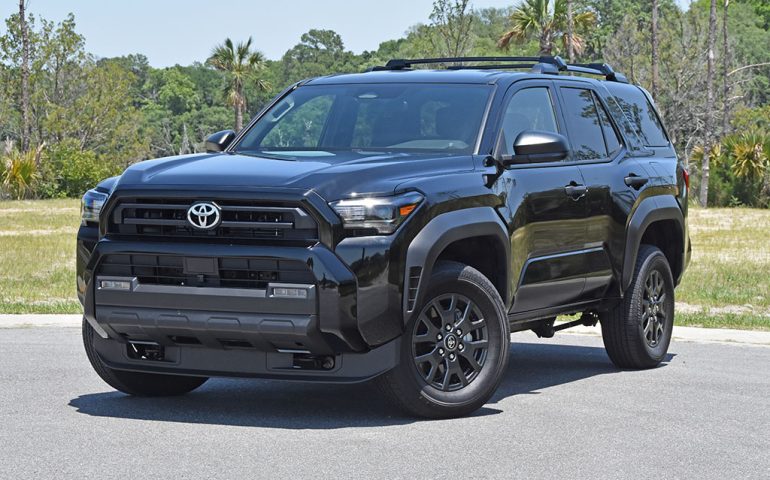
Considering the relatively high prices of vehicles today, there’s a newfound appreciation for affordable vehicles when you get back to basics and take a closer look at base trim-level versions of popular SUVs. Such a vehicle is the newly redesigned Toyota 4Runner, one that still offers up a plethora of trim levels starting with my test vehicle’s base SR5 trim touting just one option of having the part-time four-wheel-drive (4WD) setup.
The new 2025 Toyota 4Runner has been reworked and improved upon in just about every way but without taking away that beloved rugged body-on-frame theme and its appeasement for a variety of people, families included.
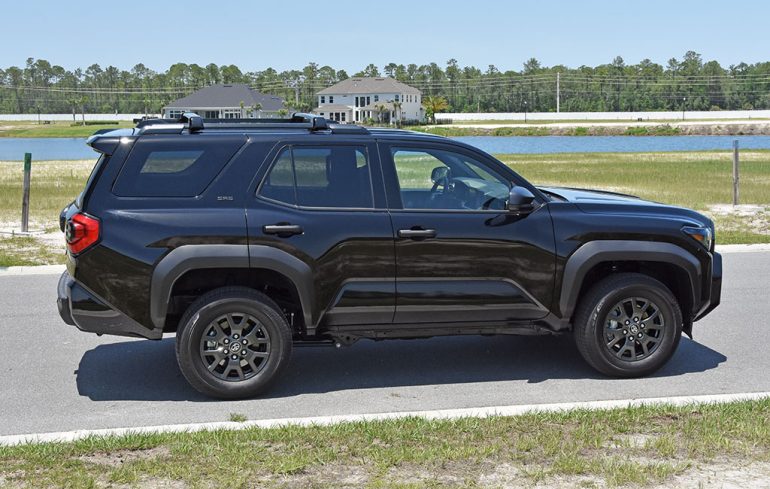
Parting ways from the old tried and true 4.0-liter V6 engine, the new 4Runner gets all-new powertrains, a choice between a 2.4-liter turbocharged inline 4-cylinder engine or a hybrid setup with the same turbo-4 working with an electric motor. In the non-hybrid setup the turbocharged 4-cylinder is good for 278 horsepower and 317 lb-ft of torque, while the hybrid setup gets a total of 326 horsepower and 465 lb-ft of torque. Both setups get mated to a new 8-speed automatic transmission, which is a long-awaited change over the aged outgoing 5-speed automatic.

Performance out on the road is, dare I say, somewhat like the outgoing 4Runner – which isn’t necessarily a bad thing. Though there’s improvement here where the driving character is more cohesive for smoother ride quality, there’s still the body-on-frame and truck-like trait that continues to plague the 4Runner when you put it into turns. Fundamentally, there’s an undeniable body roll and a mostly numb feeling in the steering. However, the overall driving dynamics are slightly more refined than the outgoing model and a slight step above direct competitors.
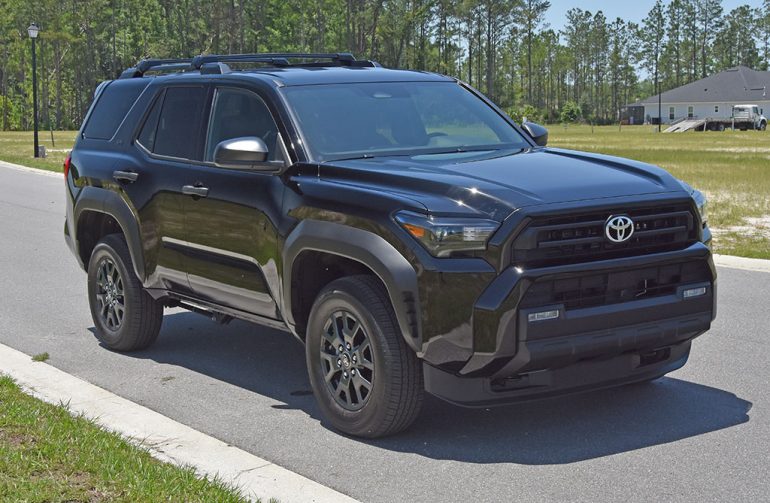
The grunt work of base 4Runner SR5 proves to be quite good as it’s much quicker than its predecessor and returns better fuel economy to match its EPA estimates of 19 mpg city, 25 mpg highway, and 21 mpg combined. The 19-gallon fuel tank filled up with regular unleaded gives you a highway cruising range of about 475 miles. When you’re not minding the now-respectable fuel economy numbers, the 4Runner is able to get up to 60 mph from a standstill in about 6.9 seconds. Overall, the midrange of the new turbocharged engine feels good and gives you a max towing capacity of 6,000 pounds.

Sure, Toyota took their time to bring us a new 4Runner, but it seems the wait was worth it as I got to explore the newly redesigned 4Runner in its base SR5 trim, with the only option being the part-time 4WD system. Such a setup is a respectable value proposition, considering there’s a decent list of standard features along with the long-touted Toyota reliability that you expect out of a 4Runner. The fundamentals of a 4Runner are all well in place as Toyota takes a methodical approach to the redesign of the 4Runner. For one, Toyota brought back the loved power roll-down rear window in the tailgate. Also, the 4Runner still offers up admirable cargo space behind the rear seats (second-row) of just over 48 cubic feet. And, of course, the 4Runner continues to have its classic look as to not offend anyone. Kudos, Toyota!

Toyota doesn’t go all out to change things up on the 4Runner – or even to impress by turning away from a formula that has worked for many decades. That’s why you’ll find many familiar characteristics wrapped up in an improved truck-like SUV. Inside, the cabin is a recognizable space flanked with many plastics but not overly cheapened in its look and feel. Here, Toyota took another conservative approach in the base trim levels of the 4Runner but still managed to include some desirables, such as heated seats (even in the cloth seats of my base 4Runner SR5 test vehicle), the latest Toyota infotainment system, a digital driver’s gauge cluster, and all of the expected active safety features including adaptive cruise control, lane departure warning/keeping assist, blind spot monitor, and forward collision warning/emergency braking.

Seating areas are decent, slightly larger, and overall familiar when compared to the outgoing model. There’s some reworking of the cabin, but not so much that one would not know what vehicle they are sitting in. The 4Runner offers up an optional third-row seating situation, but it looks to be on the smallish side. In the base SR5 trim, the infotainment unit is on the small side with an 8-inch touchscreen, while the upper trims get the larger 14-inch touchscreen unit. However, all 4Runners get wireless Apple CarPlay and Android Auto integration and the option of a wireless charging pad.
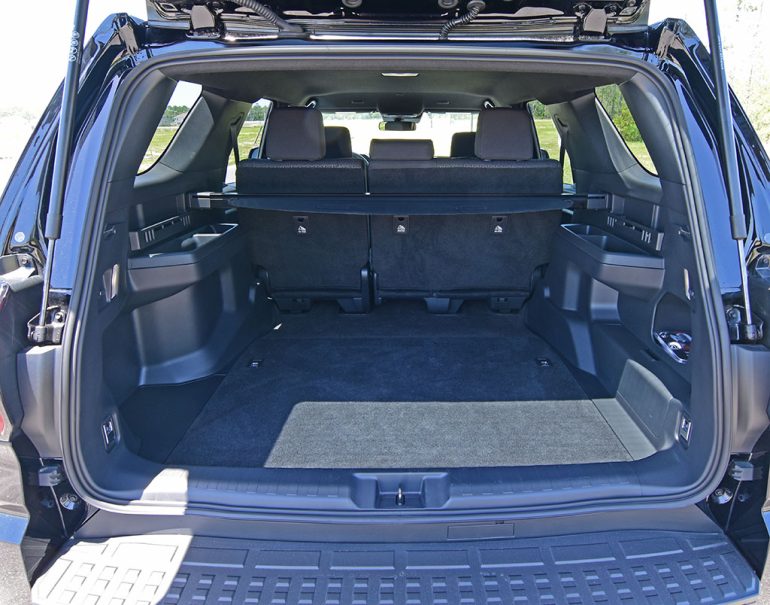
I would have liked to at least see an automatic climate control in place of the manual setup but I do respect the large knobs and repeated theme for getting back to basics in the new 4Runner SR5. Still, the value is there in such a class for an SUV with an edge over most in the area of being off-road capable if you opt for the off-roading trims or at least hit the 4WD mode that’s reserved for off-roading terrain.
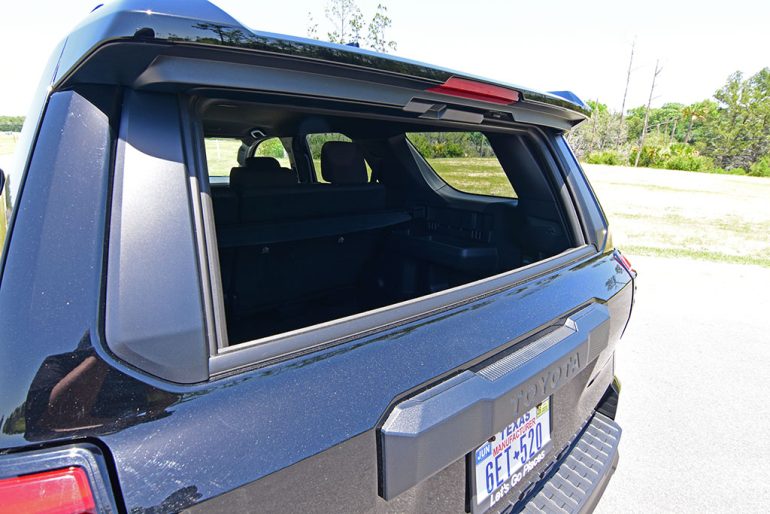
In the name of keeping things simple and affordable, the new 4Runner SR5 remains to be a good value while you get the respected improvements of the new sixth generation. Starting at $40,770 before any fees or options and landing at the as-tested price for my 4Runner SR5 4WD test vehicle at $44,270, the 4Runner remains to be a respectable choice among SUVs where such a vehicle has more character and off-roading chops than most.
FOLLOW US TODAY:

